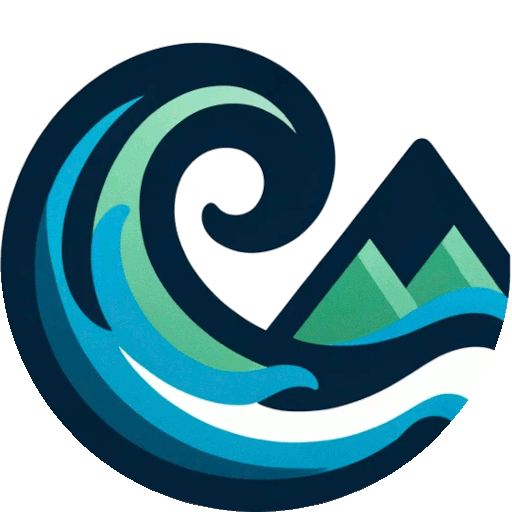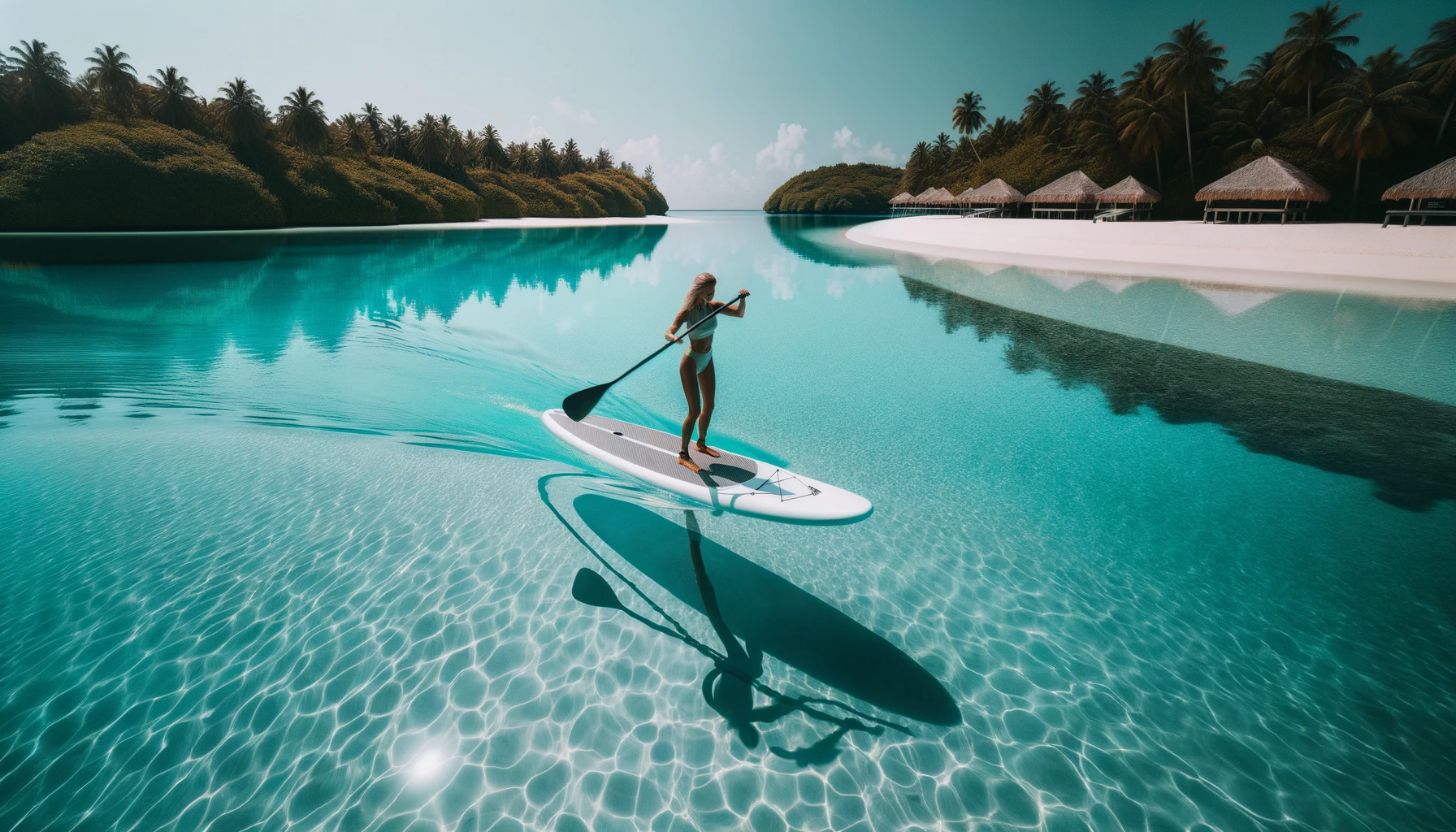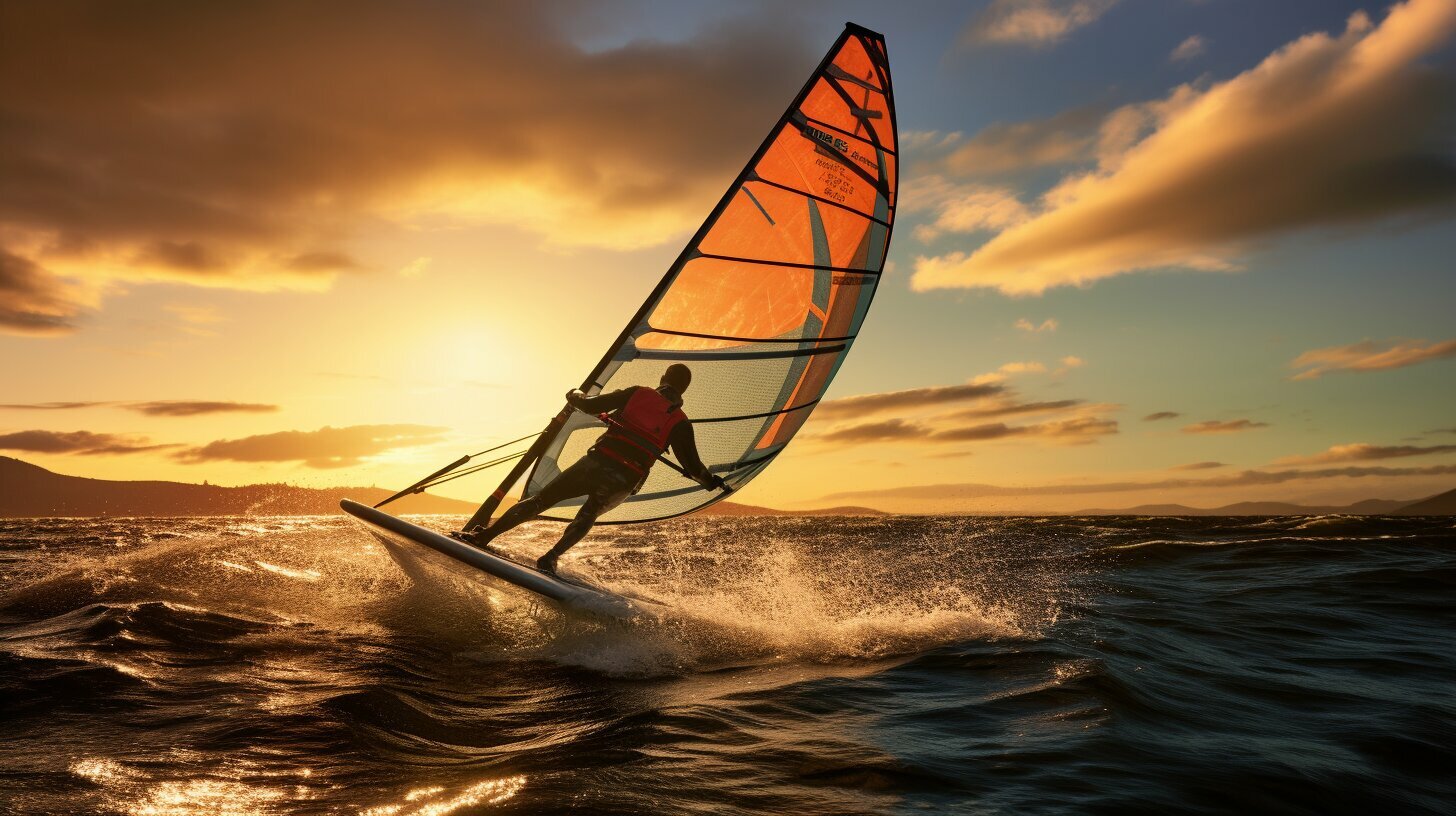If you’re looking for a thrilling water sport that combines the excitement of surfing with the adrenaline rush of flying, then kitesurfing might be just what you’re looking for. Whether you’re a complete beginner or have some experience under your belt, this guide will provide you with everything you need to know to get started with kitesurfing. From the essential gear to the basic techniques, we’ve got you covered.
Key Takeaways
- Kitesurfing is a thrilling water sport that combines surfing and flying
- Whether you’re a beginner or have some experience, this guide will provide you with all the essential information you need
- The guide covers essential gear, beginner-friendly destinations, safety tips, and more
- Taking kitesurfing lessons from a professional instructor is highly recommended
- Staying safe on the water is crucial in kitesurfing, especially for beginners
Understanding Kitesurfing
If you’re a beginner looking to learn the exhilarating sport of kitesurfing, you’ve come to the right place. Kitesurfing, also known as kiteboarding, is a water sport that combines aspects of surfing, wakeboarding, and windsurfing. As a kitesurfer, you use a large kite to harness the power of the wind to propel yourself across the water on a board.
Kitesurfing has become increasingly popular in recent years due to its adrenaline-fueled nature and its ability to be both a recreational and competitive sport. As a beginner, you’ll have the opportunity to explore different styles of kitesurfing, from freestyle to wave riding, once you’ve mastered the basics.
Disclosure: When you buy through links on our site, we may earn an affiliate commission.

If you’re ready to dive into the world of kitesurfing, keep reading this beginner’s guide to learn everything you need to know to get started.
Essential Gear for Beginner Kitesurfers
When it comes to kitesurfing, having the right gear can make all the difference, especially for beginners. Here are the essential items you’ll need to get started:
| Item | Description |
|---|---|
| Kite | Your kite is the heart of your kitesurfing setup. As a beginner, you’ll want to choose a kite with good stability and easy relaunchability. A 9-12 meter kite is a good size for most beginners. |
| Board | There are different types of kitesurfing boards, but as a beginner, you’ll want a board that is wide, stable, and easy to control. A twin-tip board is a good option for beginners. |
| Harness | A harness helps distribute the load of the kite while you’re riding. As a beginner, you’ll want a waist harness that is comfortable and provides good support to your lower back. |
| Safety equipment | Your safety equipment should include a helmet, impact vest, and kite leash. These items will help protect you in case of a fall or accident. |
| Wetsuit | A wetsuit is essential for kitesurfing, as the water can be cold even on warm days. A 3/2mm or 4/3mm wetsuit is a good option for beginners, depending on the water temperature. |
Investing in quality gear will not only make your kitesurfing experience more enjoyable, but it will also help keep you safe on the water. Make sure to do your research and choose gear that is suitable for your skill level and the conditions you’ll be kiting in.
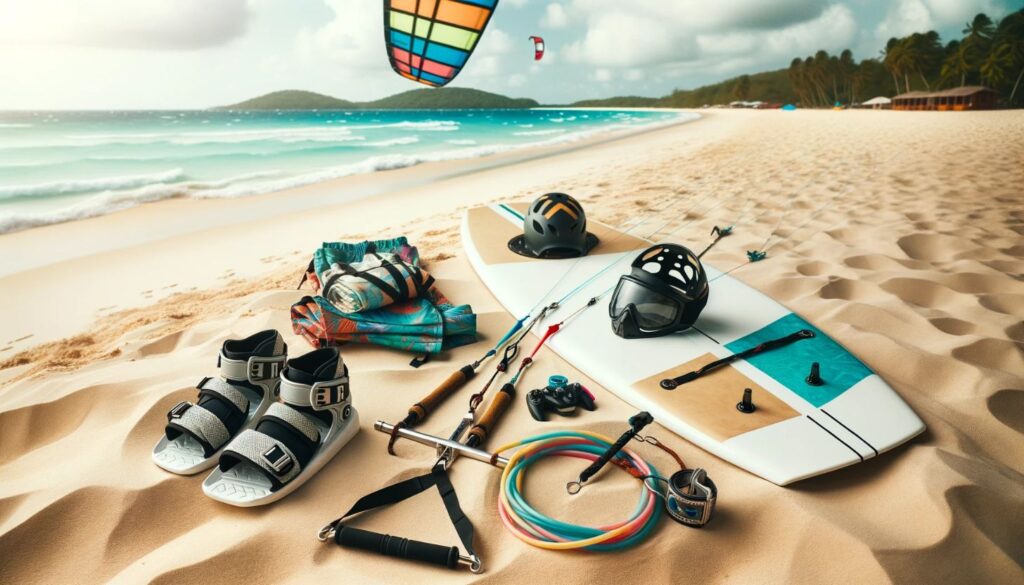
Beginner-Friendly Kitesurfing Destinations
When it comes to kitesurfing as a beginner, it’s important to find a spot that is not only beautiful but also safe and suitable for your skill level. Here are some beginner-friendly kitesurfing destinations to consider:
| Destination | Location | Wind Conditions | Water Conditions |
|---|---|---|---|
| South Padre Island | Texas | Consistent and moderate | Flat and shallow |
| Cape Hatteras | North Carolina | Consistent and strong | Waves and chop |
| Jupiter | Florida | Consistent and moderate | Flat and shallow |
These destinations have ideal wind and water conditions for beginners, along with established kitesurfing communities and schools that offer lessons and equipment rentals. Keep in mind that weather conditions can change rapidly, so always check the forecast before hitting the water. Also, be sure to follow local laws and regulations related to kitesurfing.
Remember, as a beginner, your priority should be safety rather than chasing big waves. With time and practice, you’ll be able to tackle more challenging kitesurfing spots. In the next section, we’ll discuss the importance of taking kitesurfing lessons as a beginner.

Professional Kitesurfing Lessons
If you’re serious about learning to kitesurf, taking lessons from a professional instructor is essential. Kitesurfing may look easy, but it involves a lot of technical knowledge and physical skill. A good instructor can help you master the basics, understand the wind and water conditions, and stay safe on the water.
When looking for kitesurfing lessons for beginners, it’s important to find a reputable school with certified instructors. Look for schools with a proven track record and positive reviews from previous students.
During your kitesurfing lessons, you’ll learn about the different types of kites, boards, and other gear. You’ll also learn how to launch and land the kite, body drag in the water, and perform water starts. Your instructor will be there to guide you every step of the way, offering feedback and encouragement.
As you progress, you may want to consider joining a kitesurfing club or community to connect with other kitesurfers. This can be a great way to get advice, find new spots to ride, and share your love of the sport with others.
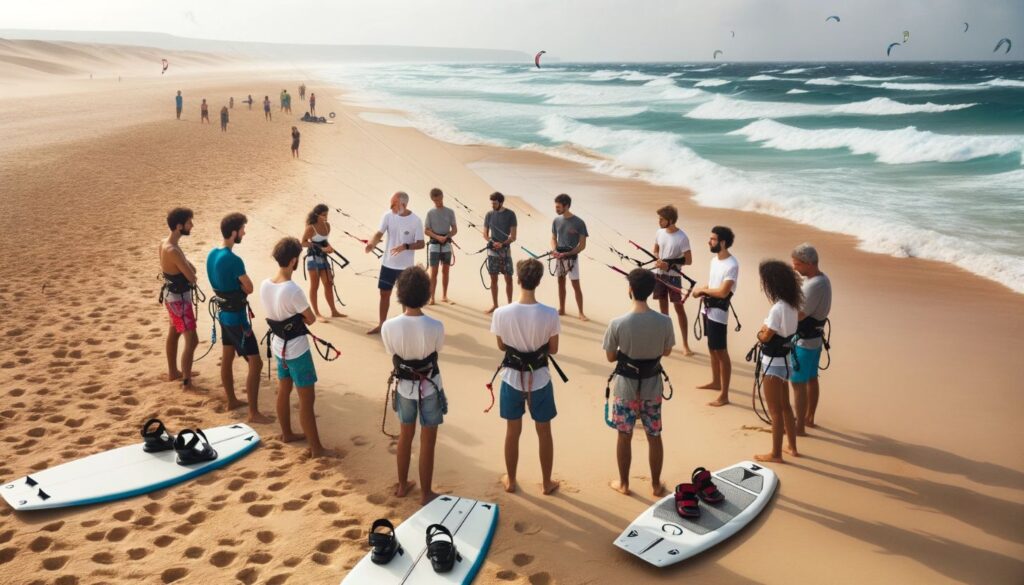
Remember, kitesurfing can be dangerous if not done properly, so always prioritize safety. By taking kitesurfing lessons, you’ll not only accelerate your learning curve, but also ensure a safe and enjoyable experience on the water.
Mastering the Basics: Kitesurfing Techniques for Beginners
Learning the fundamentals of kitesurfing is essential for beginners to progress and enjoy the sport safely. Here are some kitesurfing techniques to help you get started:
Launching the Kite
The first step in launching the kite is to find an open space with no obstacles. Attach the kite to the control bar and lay it down on the ground with the leading edge facing up and the lines untangled. Pull the safety release to deflate the kite and check that the lines are not twisted. Hold the control bar with both hands and pull the bar towards you to lift the kite. As the kite gains height, release the bar to stop it from going too high.
Body Dragging
Body dragging is a crucial technique that helps kitesurfers recover their board or move in the water without a board. To body drag, position yourself perpendicular to the wind and lean back to create lift with the kite. Use the control bar to steer the kite and move in the desired direction. Keep your body straight and your feet together to reduce drag and improve speed.
Water Starts
Once you have mastered body dragging, it’s time to learn how to ride the board. Get into a comfortable position with your feet facing the board and hold the control bar with both hands. Lean back to generate lift and pull the bar towards you to position the kite at 12 o’clock. As the kite pulls you forward, place your feet on the board and maintain your balance. Gradually steer the kite to the side and control your speed with the board’s edges.
Riding Techniques
As you gain confidence on the board, you can start experimenting with different riding techniques. Learn how to ride upwind by angling the board and using the kite’s power to propel yourself forward. Practice carving turns by shifting your weight and edging the board. Try jumping by building up speed and sending the kite upwards, then pulling down on the control bar to lift off the water.
Turning Maneuvers
Turning maneuvers are essential for changing direction and avoiding obstacles. To turn, steer the kite to the opposite side of the direction you want to go and shift your weight accordingly. For a sharp turn, move your back foot towards the edge of the board and lean your body in the direction of the turn. Practice different turning techniques, such as the downloop, backloop, and frontloop, to improve your skills.
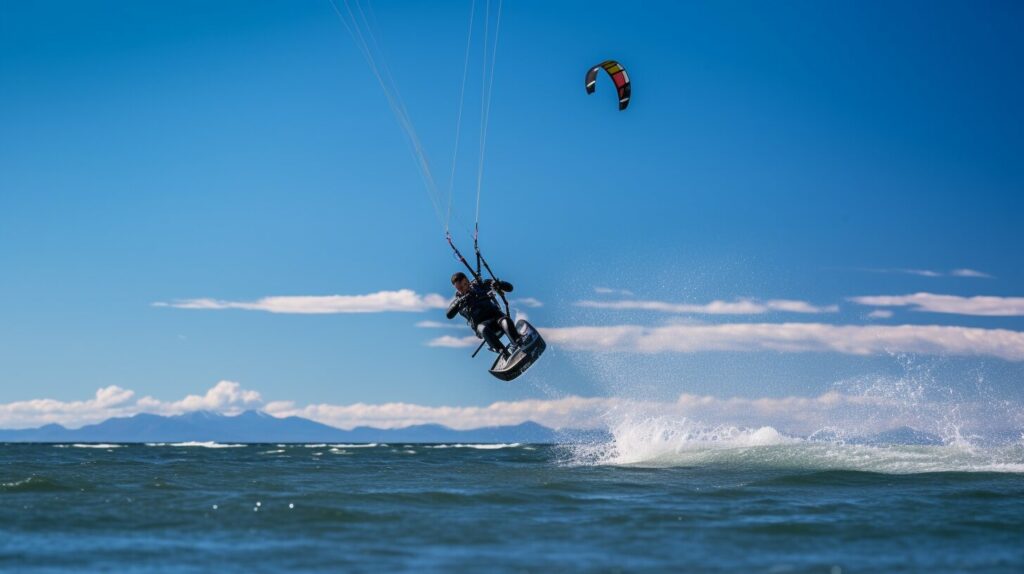
Tip: Remember to keep your eyes on the kite and anticipate changes in wind direction to avoid crashes and accidents. Practice in a safe and controlled environment, and don’t hesitate to ask for help or advice from more experienced kitesurfers.
Staying Safe on the Water
Kitesurfing can be an exciting and adventurous sport, but like any water activity, safety should always be a top priority, especially for beginners. Here are some essential safety tips to help you stay safe on the water:
- Check the Wind Conditions: Before heading out to kitesurf, always check the weather forecast and wind conditions. Ensure that wind speed is within your skill level, and never kitesurf in offshore winds. Always pay attention to sudden wind changes and be prepared to adjust your kitesurfing plans accordingly.
- Inspect Your Equipment: Before kitesurfing, check all your equipment for any signs of wear or damage. Ensure that your kite is properly inflated and that all lines and connections are secure. Only use gear that is appropriate for your skill level.
- Wear the Right Safety Gear: Wear a proper-fitting personal flotation device (PFD) and a helmet to reduce the risk of head injury. Also, make sure to wear a wetsuit if the water and weather conditions require it.
- Stay Within Your Limits: As a beginner kitesurfer, avoid pushing your limits too far. Start with safe and straightforward conditions, and gradually progress as you gain more experience. Always listen to your body, and do not overestimate your abilities.
- Stay Away from Obstacles: Avoid kitesurfing near any rocks, piers, boats, or other obstacles that can cause injury. Always leave a safe distance from other people and kitesurfers on the water.
- Practice Self-Rescue: Learn and practice self-rescue techniques such as relaunching your kite and getting back to shore in case of an emergency. Always carry a whistle or other signaling device to call for help if needed.
Remember, kitesurfing can be a very safe activity as long as you follow these safety tips and take precautions to protect yourself. By staying aware of your surroundings, checking your gear, and staying within your limits, you can enjoy your kitesurfing experience and have a great time on the water.
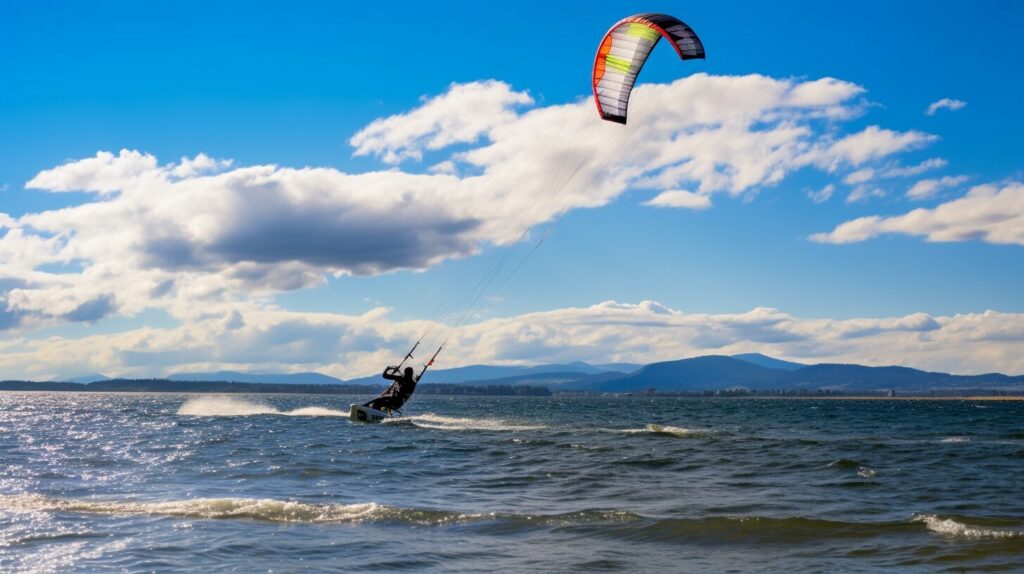
Kitesurfing Tips for Beginners
As a beginner kitesurfer, it’s essential to continue practicing and refining your skills to become a better rider. Here are some tips to help you progress:
- Start small: Don’t try to tackle big waves or strong winds right away. Start with smaller waves and calmer winds until you feel more confident.
- Keep your eyes up: Always keep your eyes focused upwind, which will help you anticipate changes in wind direction and react accordingly.
- Practice body dragging: Body dragging is a technique that can help you improve your kite control and gain confidence in the water. Practice body dragging in different wind conditions to develop your skills.
- Learn to read the waves: Understanding how to read waves can help you navigate the water more efficiently and avoid potential hazards. Spend time observing the waves and practicing riding them.
- Take lessons: Even after you’ve learned the basics, taking lessons from professional instructors can help you improve your skills and learn new techniques.
Remember, progressing as a kitesurfer takes time and practice. Don’t rush yourself and always prioritize your safety on the water.
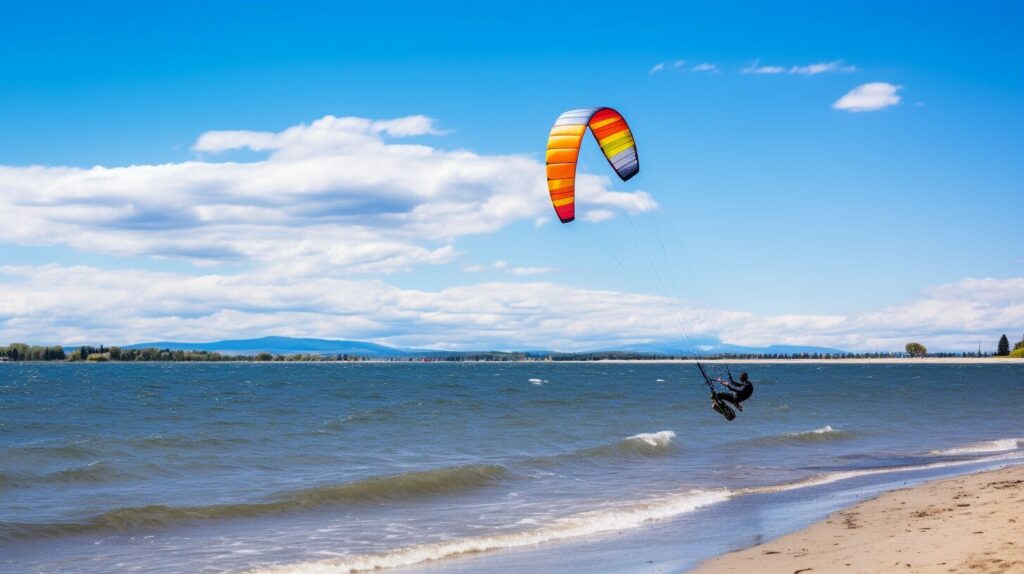
Online Forums and Groups for Kitesurfing
As a beginner kitesurfer, it’s important to tap into the wealth of knowledge and resources available in the kitesurfing community. There are several online forums, social media groups, and local kitesurfing clubs that can provide valuable advice, answer questions, and help beginners connect with experienced kitesurfers. Some popular online resources for kitesurfing beginners include:
- Kitesurfing Reddit
- Kiteforum.com
- Kiteboarding Facebook groups
Additionally, local kitesurfing clubs and schools offer group lessons, events, and meetups for beginners to connect with other kitesurfers and practice their skills in a supportive environment. Check with your local kitesurfing shop or search online for kitesurfing clubs near you. You can also find more information and resources on kitesurfing for beginners on our website.
By connecting with the kitesurfing community, you’ll have access to a wealth of information, tips, and advice that can help you improve your skills and become a confident kitesurfer.
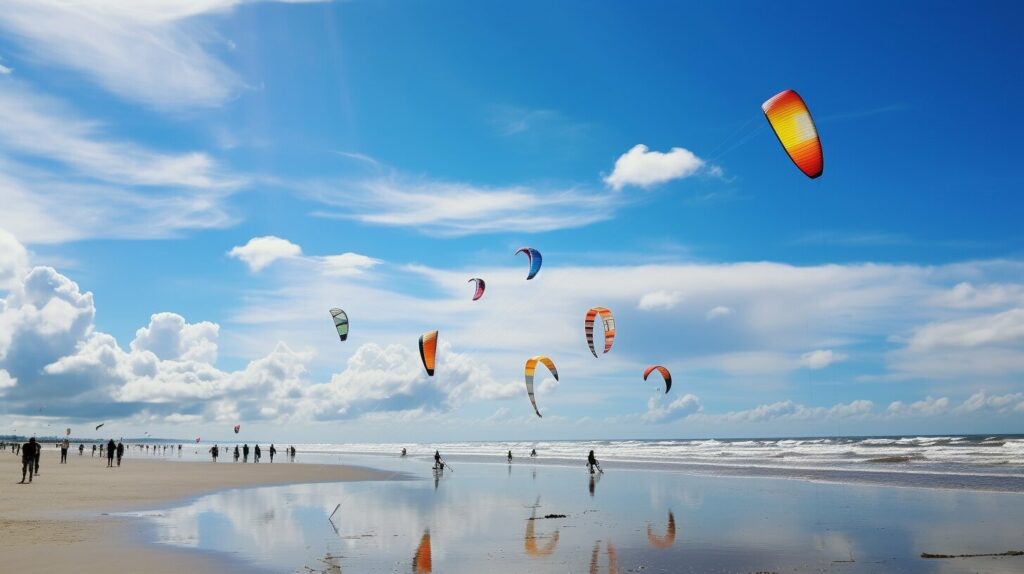
Conclusion
We hope you’ve found this guide to be informative and helpful as you embark on your kitesurfing journey.
Remember, kitesurfing is a thrilling water sport that requires a combination of skill, practice, and safety awareness. With the right gear, proper training, and a positive attitude, you’ll be well on your way to becoming a confident kitesurfer.
As you continue to progress as a kitesurfer, there are plenty of resources available to help you improve your skills and connect with other kitesurfers. Whether you’re seeking online forums, social media groups, or local kitesurfing clubs, these communities can provide valuable information and support as you pursue your passion for kitesurfing.
So what are you waiting for? Get out there and start exploring the exhilarating world of kitesurfing. With these tips and techniques under your belt, you’re sure to have an unforgettable experience on the water.
FAQ
What is kitesurfing?
Kitesurfing, also known as kiteboarding, is a water sport that combines elements of surfing, windsurfing, and wakeboarding. It involves using a large kite to harness the power of the wind and being propelled across the water on a kiteboard.
Is kitesurfing suitable for beginners?
Yes, kitesurfing can be enjoyed by beginners. However, it is important for beginners to take lessons from a professional instructor to learn the necessary skills and safety measures. It is also crucial to start in beginner-friendly conditions and gradually progress as skills improve.
What gear do I need to start kitesurfing?
As a beginner kitesurfer, you will need essential gear such as a kite, kiteboard, harness, safety equipment (like a helmet and impact vest), and a wetsuit. It is advisable to consult with a professional or visit a kitesurfing store to ensure you have the appropriate equipment for your skill level and local conditions.
Where are some beginner-friendly kitesurfing destinations?
Some popular beginner-friendly kitesurfing destinations in the United States include Cape Hatteras in North Carolina, South Padre Island in Texas, and St. Petersburg in Florida. These locations offer consistent winds, shallow water, and dedicated kitesurfing schools.
Should I take kitesurfing lessons as a beginner?
Yes, it is highly recommended to take kitesurfing lessons as a beginner. Professional instructors can teach you the essential skills, safety precautions, and techniques needed to become a competent kitesurfer. They will also ensure you have a solid foundation to build upon as you progress in the sport.
What are some fundamental kitesurfing techniques for beginners?
As a beginner, some important kitesurfing techniques to learn include launching and landing the kite, body dragging (using the kite to maneuver through the water without the board), water starts (getting up on the board from the water), riding techniques, and turning maneuvers.
How can I stay safe while kitesurfing as a beginner?
Safety is paramount in kitesurfing, especially for beginners. Some safety tips include checking weather conditions before heading out, properly inspecting and maintaining your equipment, wearing appropriate safety gear, and learning self-rescue techniques in case of emergencies.
Are there any tips for improving as a beginner kitesurfer?
Yes, some tips for beginner improvement include practicing regularly, setting realistic goals, seeking feedback from more experienced kitesurfers, and gradually progressing to more challenging conditions and maneuvers as your skills develop.
Where can I find kitesurfing communities and resources for beginners?
There are various online forums, social media groups, and local kitesurfing clubs where beginners can connect with experienced kitesurfers, ask questions, and find valuable information. These communities can provide guidance, share tips, and offer support to beginners on their kitesurfing journey.
